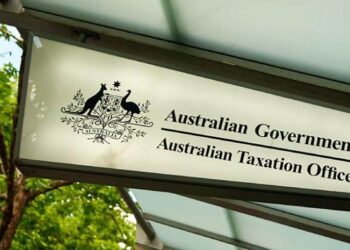In an online article, Heffron senior SMSF specialist Alex Denham explained that when the transfer balance cap and total superannuation balance came into effect, there were some transitional arrangements introduced for calculating the total superannuation balance.
These transitional arrangements have resulted in some pensions that were started on 1 July 2017 being double counted, Ms Denham said.
“Some pension members of SMSFs stopped and restarted their pensions on 1 July 2017 as part of their planning for the introduction of the new rules. There were many reasons for doing this, commonly to merge accumulation balances into retirement phase pensions,” she explained.
“We have started getting calls from accountants and administrators wondering why their client’s pension seems to have been double counted for the TSB purposes. It’s to do with how the ATO is calculating TSB in the commencement year, and it’s taken many by surprise.”
Ms Denham used an example of an SMSF trustee with $1,400,000 in their super fund to explain the issue.
The SMSF trustee correctly reported the $1.4 million via the SMSF annual return, she said, comprising an accumulation phase value of $400,000 and a retirement phase value of $1,000,000.
“He commuted the pension on 1 July 2017, merged it with his accumulation account and started a new pension for the full $1,400,000,” she explained.
The following was reported:
- Closing balance of the superannuation accounts reported via the SMSF return: $1,400,000
- The opening pension balance on 1 July 2017 (TBAR): $1,000,000
- The commutation of the pension on 1 July 2017 (TBAR): -$1,000,000
- The commencement of the new pension on 1 July 2017 (TBAR): $1,400,000
During the year, he made a non-concessional contribution (NCC) of $100,000 and recently received an excess NCC determination.
SMSF professionals may be confused as to how this is possible, she said, when his TSB was under $1.6 million.
“TSB is calculated by adding together the accumulation phase value (APV) and the retirement phase value (RPV) of a person’s superannuation interests. Generally, the 30 June balances of each are reported to the ATO via the SMSF Annual Return and that’s that,” she explained.
“In 2017, however, the ATO was more interested in recording the values of APVs and RPVs as they were to continue from the day after 1 July 2017 as opposed to how they were on 30 June.”
Under the transitional arrangements, she said, a member’s transitional transfer balance at the end of 30 June 2017 was equal to the sum of their transfer balance credits just after the start of 1 July 2017.
“In other words, they ignored 1 July debits and didn’t want to know about the original pension opening balance,” she explained.
Due to the TBAR reporting, Ms Denham said this means the member’s transfer balance credits totaled $2,400,000, comprising the opening pension balance on 1 July, which was $1,000,000, plus the new pension on the same day, which was $1,400,000.
This results in the total superannuation balance on 30 June 2017 being greater than $1.6 million and the member receiving an excess non-concessional contribution determination, she explained.
What should have been reported, she said, was the closing balance of the superannuation accounts, which was $1,400,000, and the commencement of the new $1,400,000 pension on 1 July 2017.
“The pension already in place and the commutation of that pension should not have been reported at all. If those two events had not been reported, the member’s transfer balance account would correctly show $1,400,000 on 1 July,” she said.
“The APV on 30 June 2017 is then calculated as the difference between the closing account balance from the SMSF Annual Return ($1,400,000) and the value of the member’s transfer balance account for the SMSF at 1 July 2017 ($1,400,000).”
In order to rectify the situation, the administrator would need to lodge a cancellation TBAR for the existing pension on 1 July 2017 and a cancellation TBAR for the commutation.
Ms Denham noted that this only applies for the 2017 year and that, from 2018 onwards, the TSB should simply be the closing balances reported via the SMSF return.



SMSFs do not need to amend their TBAR reporting where an incorrect ENCC determination may have issued because they reported pensions with an effective date of 30 June 2017 and 1 July 2017 for a member. The ENCC determination may issue in these circumstances due to an ATO systems issue, but should be amended within 4 weeks. If the ENCC determination is not amended after 4 weeks, you should contact us by emailing SuperAdvice@ato.gov.au
This whole system is beyond stupid. Clearly developed by bureaucrats with a need to justify their job existence.